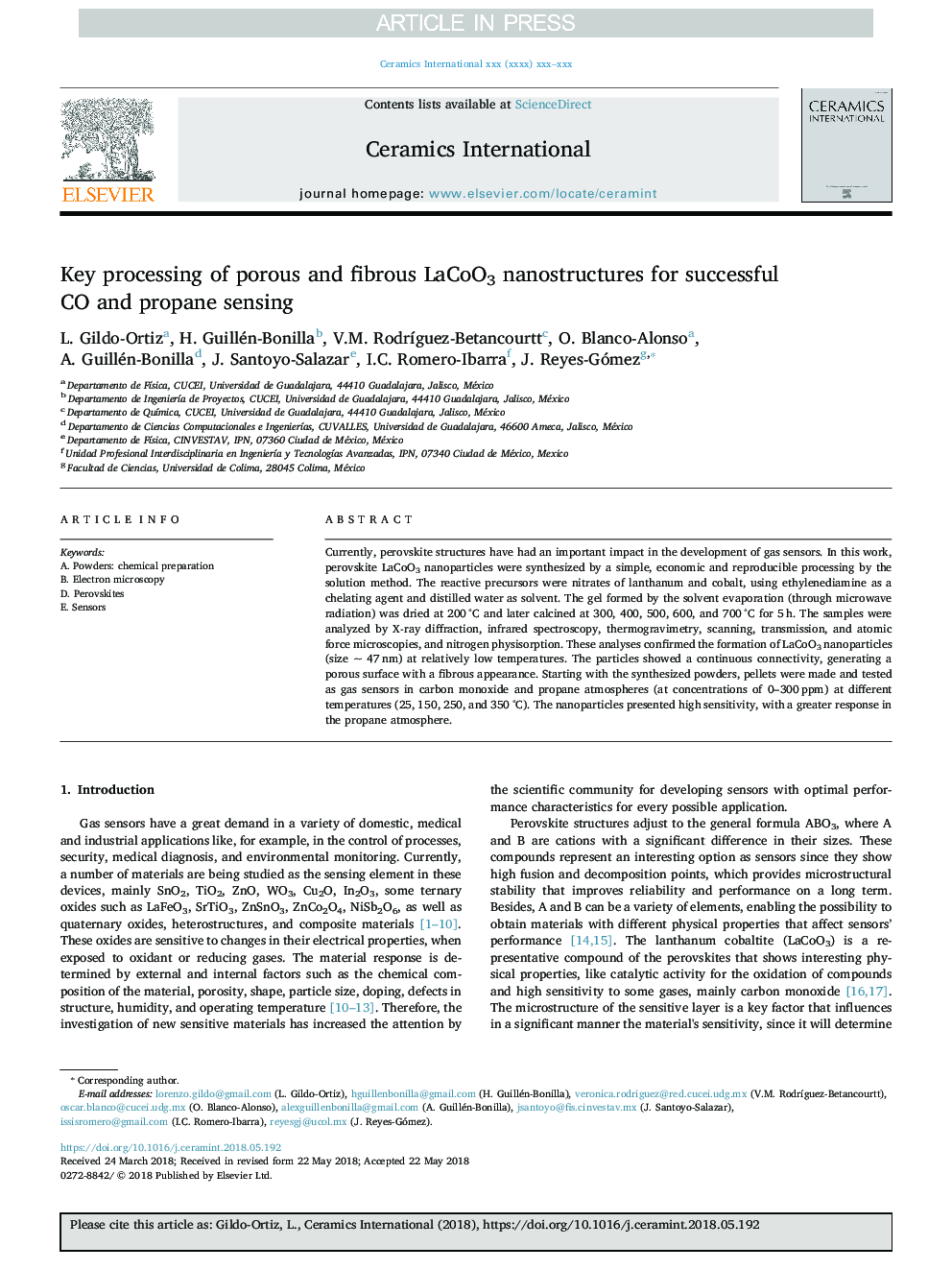| Article ID | Journal | Published Year | Pages | File Type |
|---|---|---|---|---|
| 7886264 | Ceramics International | 2018 | 9 Pages |
Abstract
Currently, perovskite structures have had an important impact in the development of gas sensors. In this work, perovskite LaCoO3 nanoparticles were synthesized by a simple, economic and reproducible processing by the solution method. The reactive precursors were nitrates of lanthanum and cobalt, using ethylenediamine as a chelating agent and distilled water as solvent. The gel formed by the solvent evaporation (through microwave radiation) was dried at 200â¯Â°C and later calcined at 300, 400, 500, 600, and 700â¯Â°C for 5â¯h. The samples were analyzed by X-ray diffraction, infrared spectroscopy, thermogravimetry, scanning, transmission, and atomic force microscopies, and nitrogen physisorption. These analyses confirmed the formation of LaCoO3 nanoparticles (size ~ 47â¯nm) at relatively low temperatures. The particles showed a continuous connectivity, generating a porous surface with a fibrous appearance. Starting with the synthesized powders, pellets were made and tested as gas sensors in carbon monoxide and propane atmospheres (at concentrations of 0-300â¯ppm) at different temperatures (25, 150, 250, and 350â¯Â°C). The nanoparticles presented high sensitivity, with a greater response in the propane atmosphere.
Related Topics
Physical Sciences and Engineering
Materials Science
Ceramics and Composites
Authors
L. Gildo-Ortiz, H. Guillén-Bonilla, V.M. RodrÃguez-Betancourtt, O. Blanco-Alonso, A. Guillén-Bonilla, J. Santoyo-Salazar, I.C. Romero-Ibarra, J. Reyes-Gómez,
